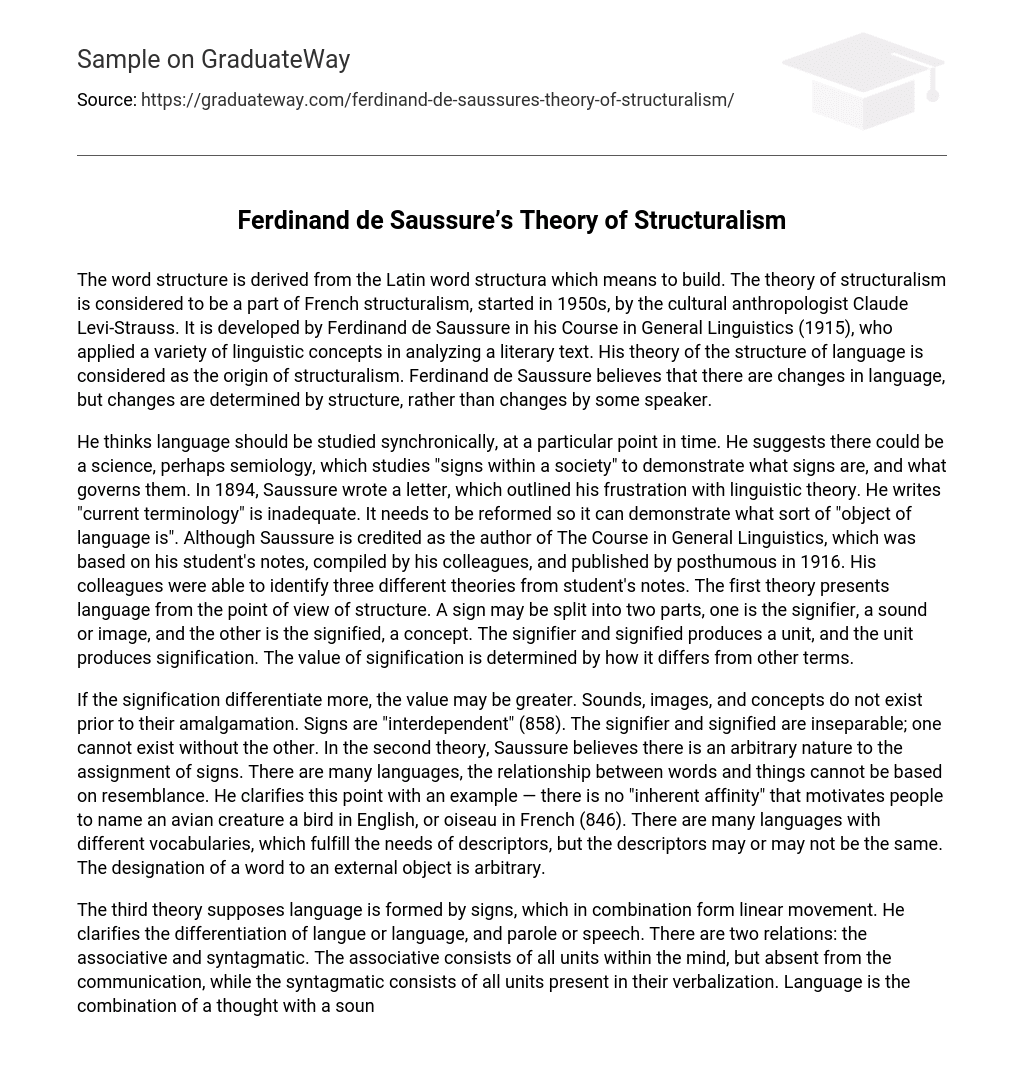The word structure is derived from the Latin word structura which means to build. The theory of structuralism is considered to be a part of French structuralism, started in 1950s, by the cultural anthropologist Claude Levi-Strauss. It is developed by Ferdinand de Saussure in his Course in General Linguistics (1915), who applied a variety of linguistic concepts in analyzing a literary text. His theory of the structure of language is considered as the origin of structuralism. Ferdinand de Saussure believes that there are changes in language, but changes are determined by structure, rather than changes by some speaker.
He thinks language should be studied synchronically, at a particular point in time. He suggests there could be a science, perhaps semiology, which studies “signs within a society” to demonstrate what signs are, and what governs them. In 1894, Saussure wrote a letter, which outlined his frustration with linguistic theory. He writes “current terminology” is inadequate. It needs to be reformed so it can demonstrate what sort of “object of language is”. Although Saussure is credited as the author of The Course in General Linguistics, which was based on his student’s notes, compiled by his colleagues, and published by posthumous in 1916. His colleagues were able to identify three different theories from student’s notes. The first theory presents language from the point of view of structure. A sign may be split into two parts, one is the signifier, a sound or image, and the other is the signified, a concept. The signifier and signified produces a unit, and the unit produces signification. The value of signification is determined by how it differs from other terms.
If the signification differentiate more, the value may be greater. Sounds, images, and concepts do not exist prior to their amalgamation. Signs are “interdependent” (858). The signifier and signified are inseparable; one cannot exist without the other. In the second theory, Saussure believes there is an arbitrary nature to the assignment of signs. There are many languages, the relationship between words and things cannot be based on resemblance. He clarifies this point with an example ― there is no “inherent affinity” that motivates people to name an avian creature a bird in English, or oiseau in French (846). There are many languages with different vocabularies, which fulfill the needs of descriptors, but the descriptors may or may not be the same. The designation of a word to an external object is arbitrary.
The third theory supposes language is formed by signs, which in combination form linear movement. He clarifies the differentiation of langue or language, and parole or speech. There are two relations: the associative and syntagmatic. The associative consists of all units within the mind, but absent from the communication, while the syntagmatic consists of all units present in their verbalization. Language is the combination of a thought with a sound. For example, language is a “series of contiguous subdivisions marked off on both indefinite plane of jumble ideas, and the equally vague plane of sounds”. The role of language is to serve as a connection between “thought and sound”. The distinction between thought and sound implies unique separateness. It is through their separateness that language takes form. How can language disregard the speaker?
The ideas by Saussure are interesting, but appear to disregard the link between the speaker and language. For example, when George W. Bush announced, “I am the Decider:” immediately, in the consciousness of the public, a new noun was formed, the Decider. This is an example of how the speaker changes the language rather than structure changing the language. It represents an alternative not considered by this structuralism theory by Saussure.





